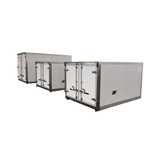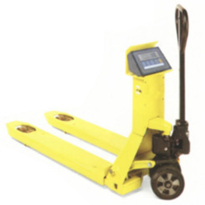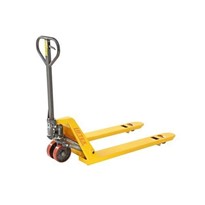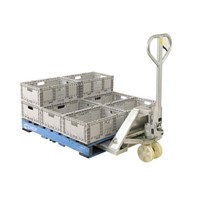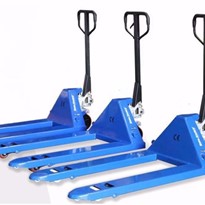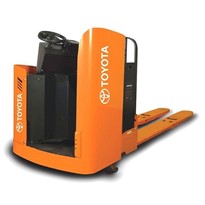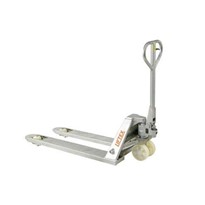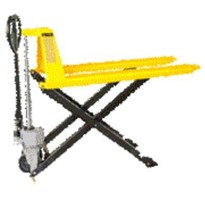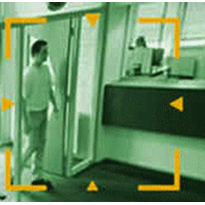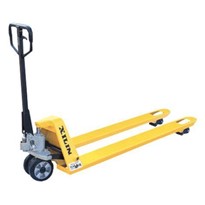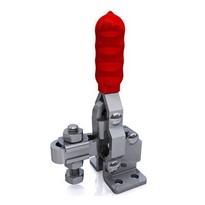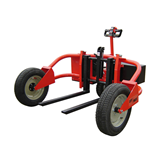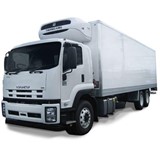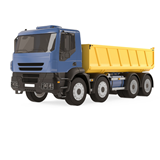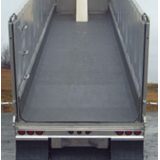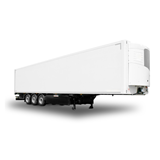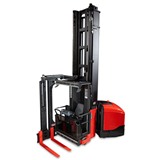It is pretty much indispensable for any company that has to load and move product on pallets.
It enables any person to move a load — usually no more than 3 tonnes in weight — relatively easily, simply by pumping the handle, then pulling on the truck.
No licence required. Simple to understand and use. Low cost. Virtually maintenance-free. Very few moving parts. Very difficult to damage if used properly.
What makes a good pallet truck?
Pallet trucks used to be expensive. The good ones were always much more expensive than the bad ones. Today, all pallet trucks are reasonably priced and most are worth buying, but beware of the lemons.
Lemons often come with the following: cheap manufacturing techniques, poorer grades of steel, thinner material, poor quality pistons, odd sized and second rate hydraulic seals, and generally poor design.
Because price is no longer the only indication of quality, you need to look for the following if you want a long lasting truck:
- The load rating should be a minimum of 2500kgs (unless it is a special purpose or modified truck). Pallet loads rarely exceed this weight.
- To gain extra strength in the forks, the channel section is usually reinforced at the rear where it meets the upright section. An option is to bend the channel once more, as if trying to complete a box section. Some manufacturers do both. The reinforced section usually runs from 100 to 300mm back along the underside of the forks. Tip it up and inspect the back end.
- Some forks have thinner gauge material and the steel quality is not as good as others, but this is difficult to assess unless you have a high quality and a poorer quality truck side by side, or you know the integrity of the brand. So buy from a long time merchant whom you trust.
- Some trucks have adjustable tie rods. This is the rod that connects the front wheels to the torque arm at the rear. If it is adjustable, you can adjust it in order to maintain a level truck as the front wheels wear down. In effect, most people forget or don't know it's there and by the time the front wheels are worn down, it's time for new wheels or to throw the truck away.
- Chrome plated pistons or stainless steel pistons are superior to mild steel, some of which are hardened to a greater degree than others. The piston raises the truck from the cylinder, so it is important to check this where possible. Sales literature should point out this feature.
- Hydraulic seals can make or break a pallet truck. I have seen seals so poor that a truck has started leaking within two weeks. Imagine how ripped off you would feel if that happened to you, no matter how little you had paid for it. High quality seals make a poor product perform longer, and a great product perform for donkey's years. Again, look for or ask about the seal quality.
- Generally, the hydraulic oil reservoir is best as a part of the cylinder block. There are some in which the oil is in a separate reservoir outside of the block, but they always give trouble in my experience, as the rubber/neoprene bladder cracks over time and the seal into the piston starts to leak.
- Wheels are an interesting topic. I prefer the urethane tyre on a cast steel hub style, simply because it offers a slightly cushioned, less noisy, high load capacity hub. It may be argued that a solid nylon wheel offers less rolling resistance. I contend that the difference is minimal, but the benefits are appreciable. Having said that, I understand that food preparation areas may prefer solid nylon as there are usually fewer cavities to keep clean, and in places where metal swarf is an issue in penetrating a urethane tyre, a solid nylon may be preferable.
- Most handles have a 3-way lever: Up/Down/Neutral. Neutral allows the user to place the lever in that position to a) bring the handle down in order to move the truck, without the load being lifted further, and b) to prevent any other person from raising the load past a pre-determined point.
- Look for pallet entry wheels and or pallet entry angles (wheels are better). They assist the truck over the entry baseboard and help with a smoother exit from the pallet.
- Most trucks have full loop handles with plastic comfort covers. These help when it's cold in winter and hot in summer.
A few extra points to consider
Some trucks have grease nipples fitted, some don't. Due to sealed long life bearings, this is not really an issue. When the truck is fitted with grease nipples however, it's good policy to add that feature to your six monthly maintenance programme.
Urethane tyres used to come away from the steel hub after many years of use. With modern vulcanisation techniques, this is not the issue it once was.
The load wheels are the ones at the front. The steer wheels are the larger diameter ones at the rear. In Australia, make sure you only buy a hand pallet truck with single load wheels - not dual. Dual load wheels are ok for Euro and skid pallets and stillages, but the standard Australian pallet (Chep & Loscam types), is configured with baseboards that allow for just enough room for single load wheels to operate successfully in. Most dual load wheels will not fit in the available space.
The available range
The humble pallet truck has come a long way: shortened, lengthened, widened, narrowed, increased capacity, special purpose for roll carrying, low and ultra low profile, galvanised or stainless steel for salty/corrosive environments, fitted with weigh scale, and load wheels that turn sideways for carrying long lengths of timber or steel.
If you need to raise a load higher, then consider high lift pallet trucks or skid lifters.
What not to do:
- Don't use the truck as a skateboard. Not only are they difficult to stop once you get up speed, but a runaway truck can cause serious damage to people and stock, not to mention you.
- Don't lift a load up by one fork. It can buckle quite easily.
- Don't lift a load by the fork ends. It is designed to take a load over the whole length and over both forks.
- Don't overload the truck. If it's a three tonne machine you want to move, bring in a forklift, or use two pallet trucks.
- Don't neglect it. Remember: if it moves, then it needs servicing. Grease the bearings. Remove the string from the wheels. Oil the levers. Check the oil level. If it's leaking, get the seals replaced.


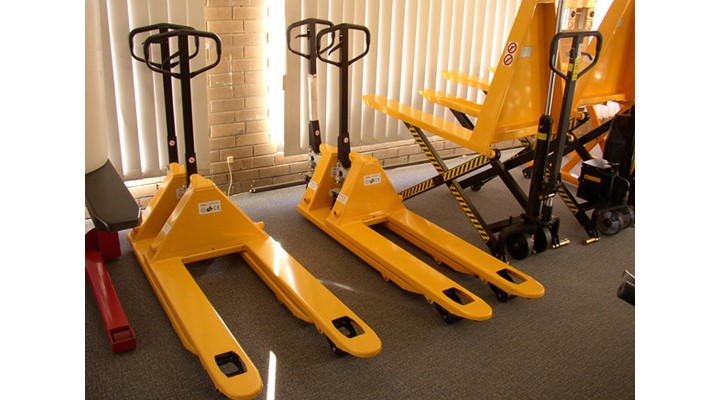
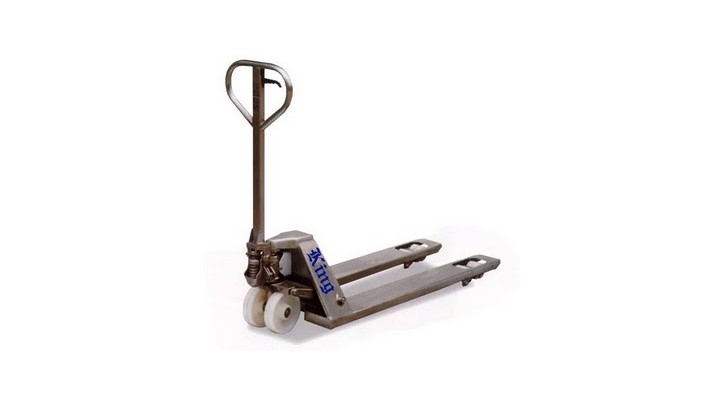




-160x160-state_article-rel-cat.png)
